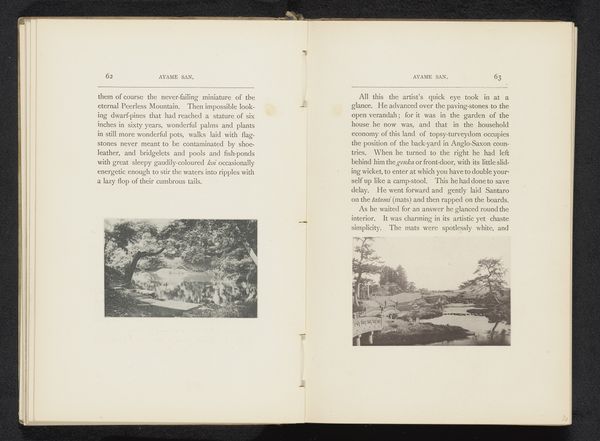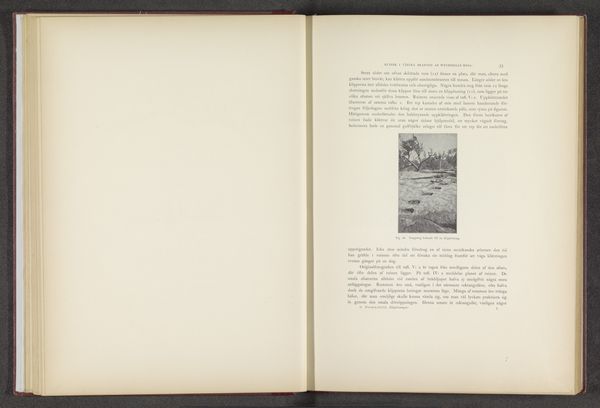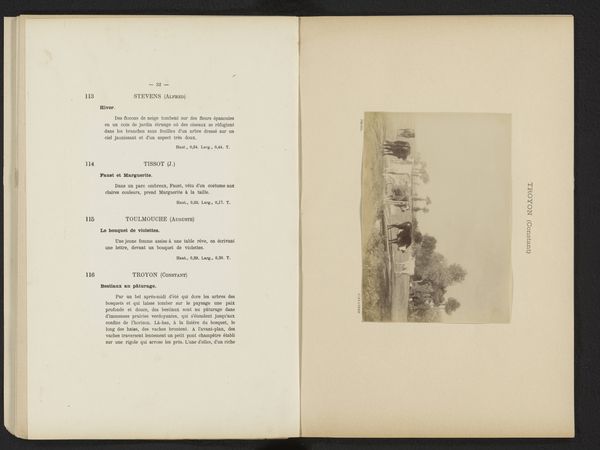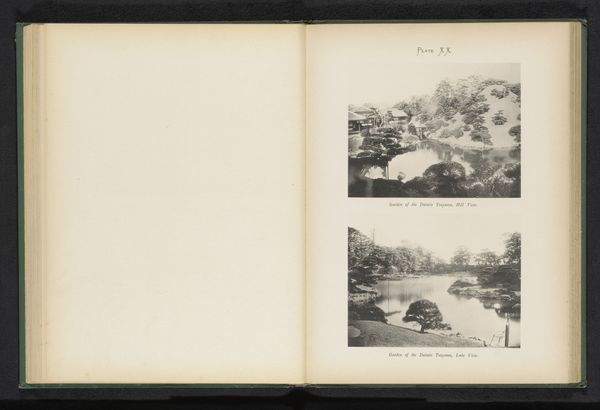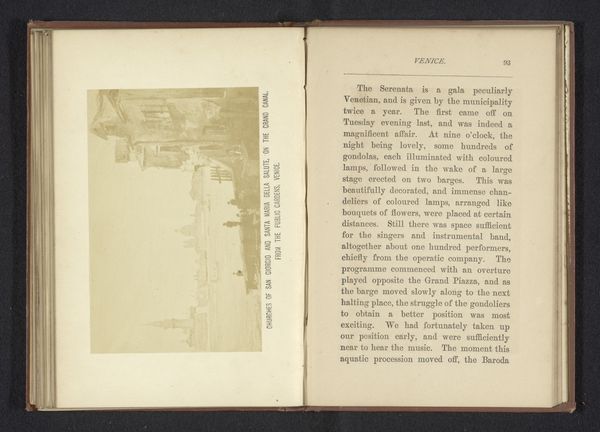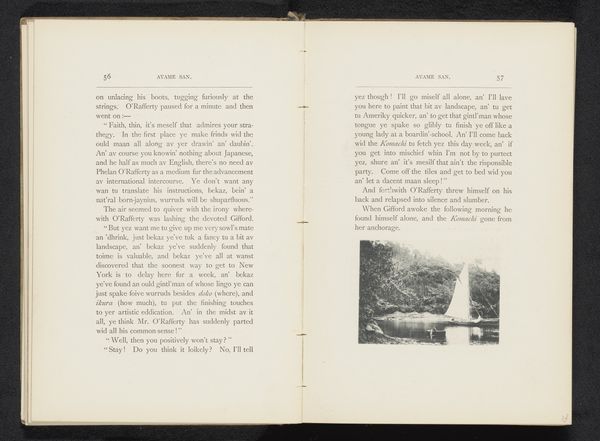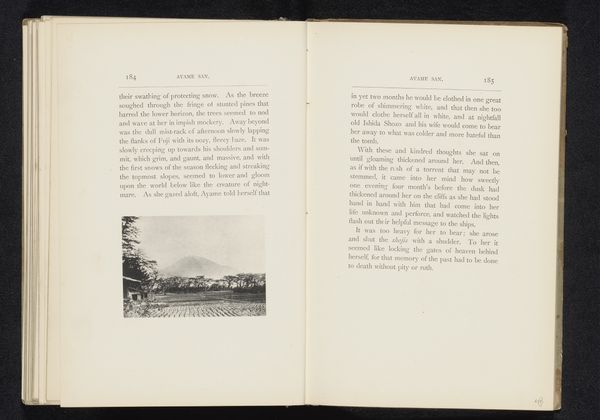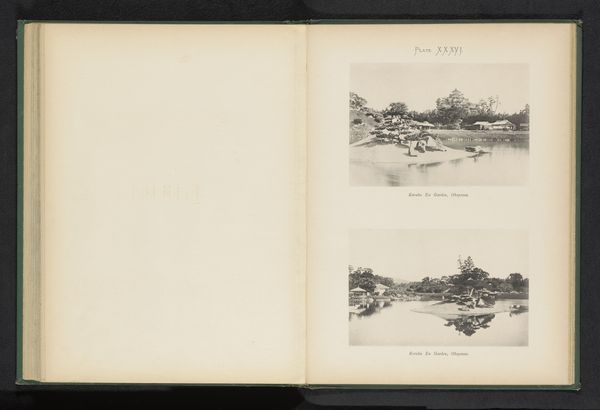
Gezicht op (vermoedelijk) het Boeddhabeeld van de tempel Kotoku-in te Kamakura before 1892
0:00
0:00
Dimensions: height 68 mm, width 88 mm
Copyright: Rijks Museum: Open Domain
This photograph of the Great Buddha at Kotoku-in Temple in Kamakura, Japan, was taken by William Kinnimond Burton. It's found in his book "Ayame-San", a window into the late 19th century colonial gaze. Burton, a Scottish engineer and photographer, worked extensively in Japan. His images, while seemingly objective, participated in constructing a vision of Japan for a western audience. Consider how the framing, the angle, and even the choice of subject contribute to a particular narrative. The Great Buddha itself is an important piece of institutional history. Its construction, funded in part by the court ladies, reflects the complex interplay of religious belief, social class, and political power. Historians use sources such as travel writing, photography, and institutional records to unpack the cultural dynamics. By situating this image within its historical context, we can start to understand the power relations at play between Japan and the West.
Comments
No comments
Be the first to comment and join the conversation on the ultimate creative platform.


